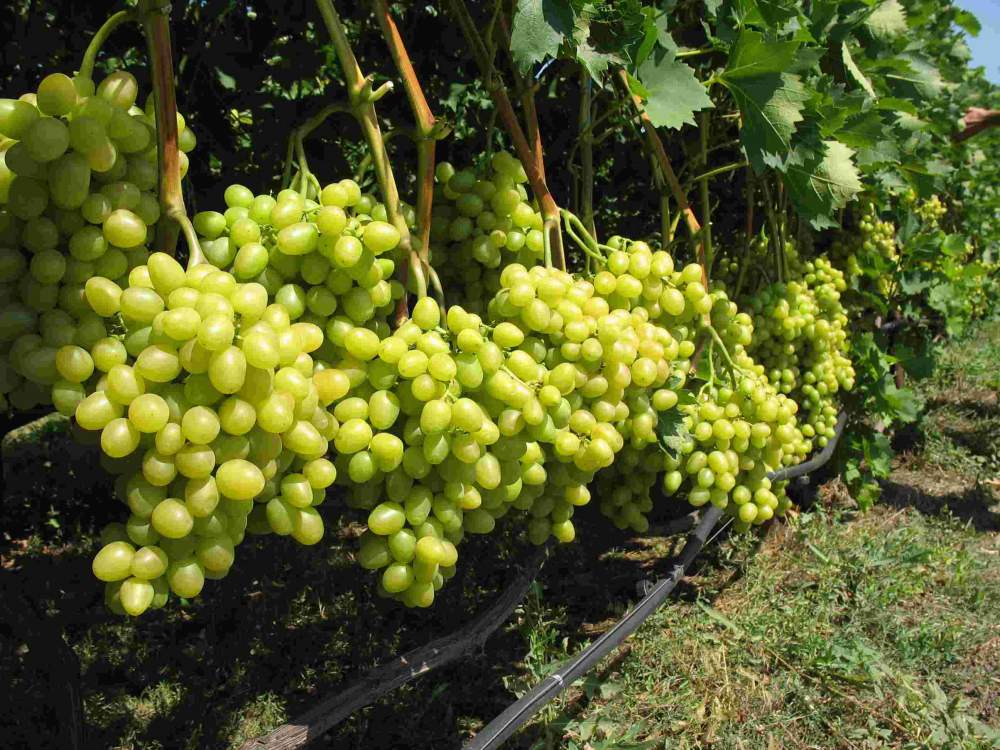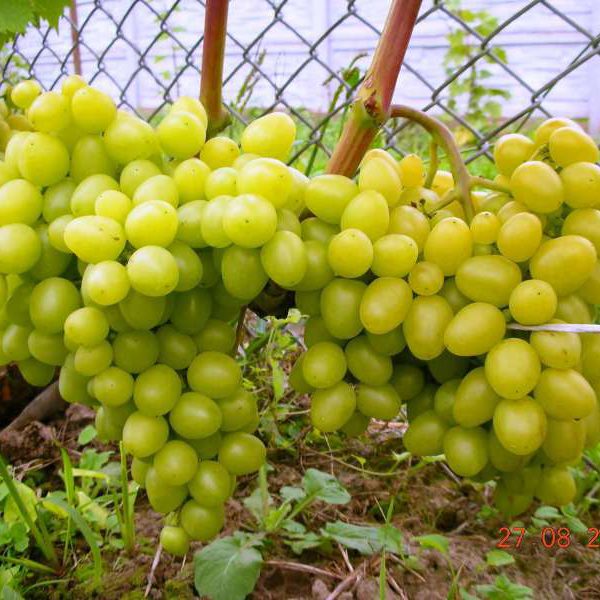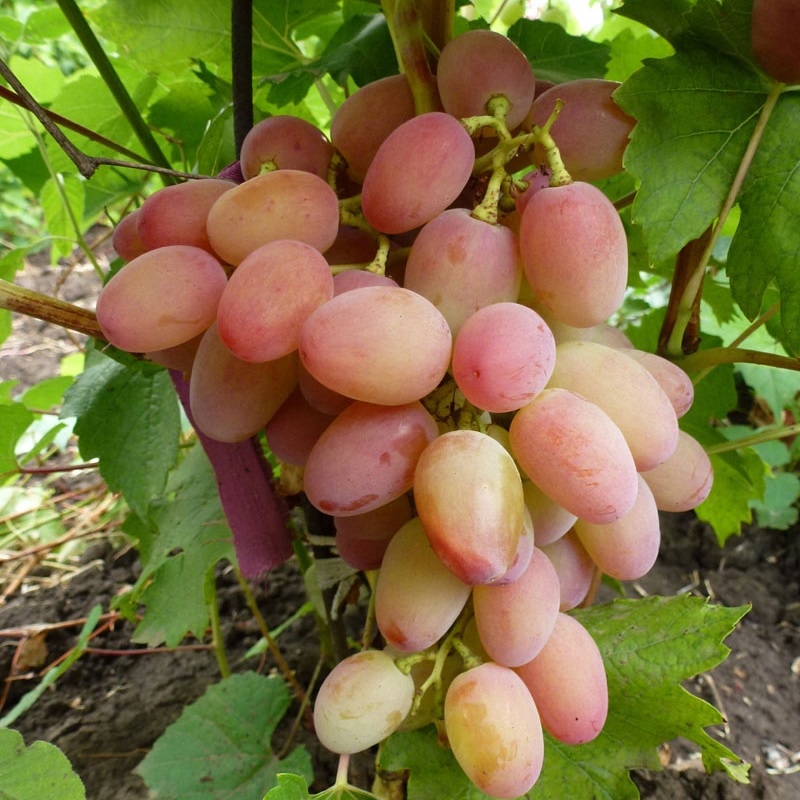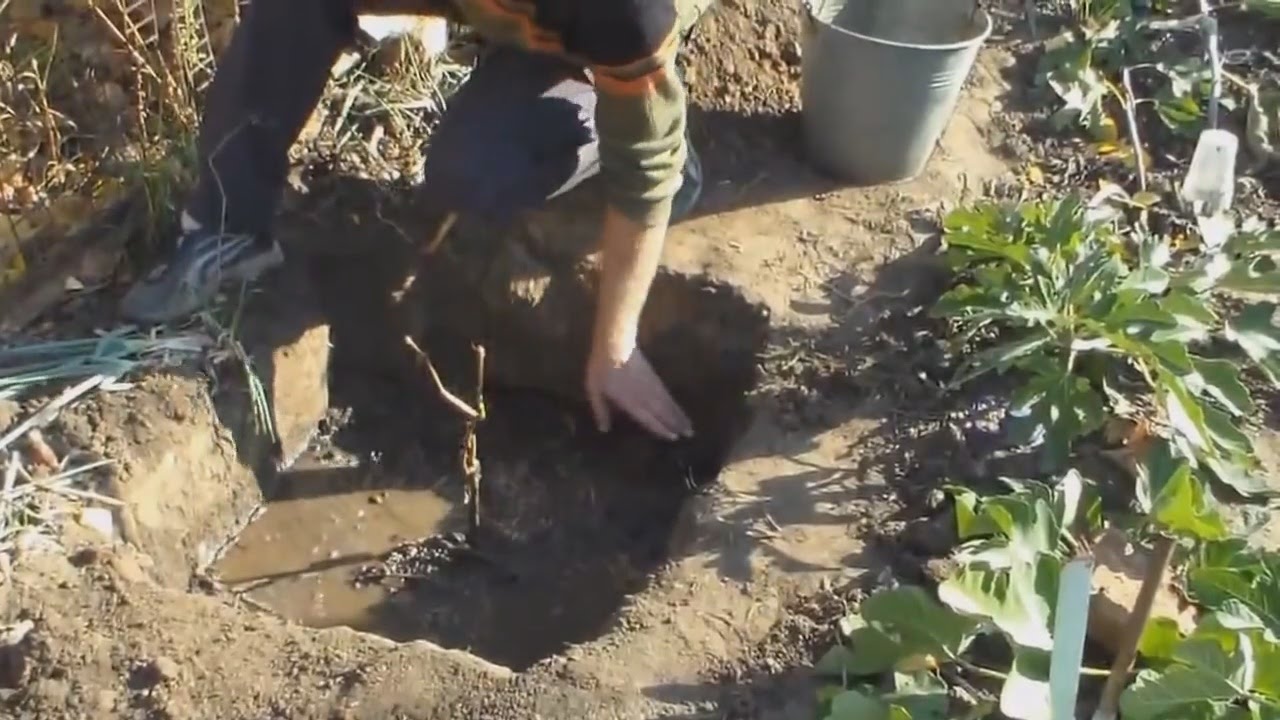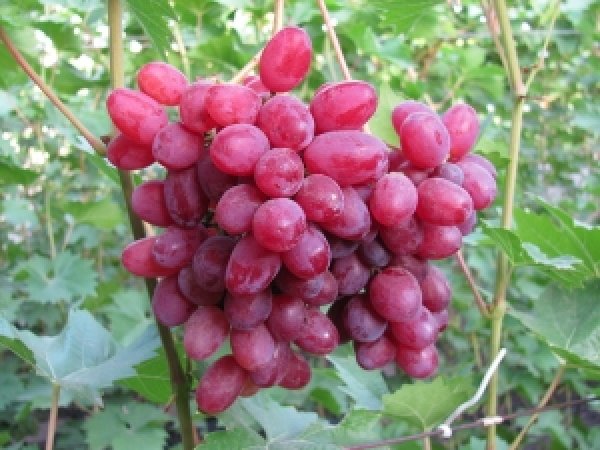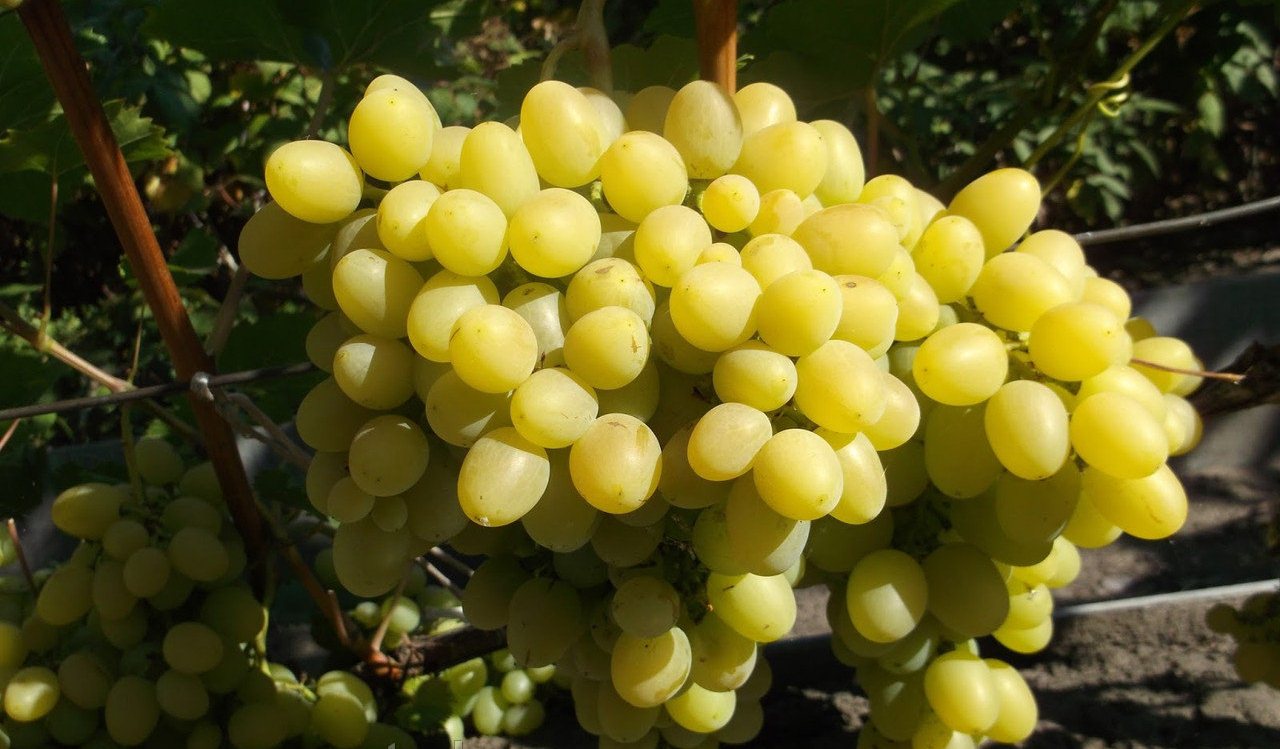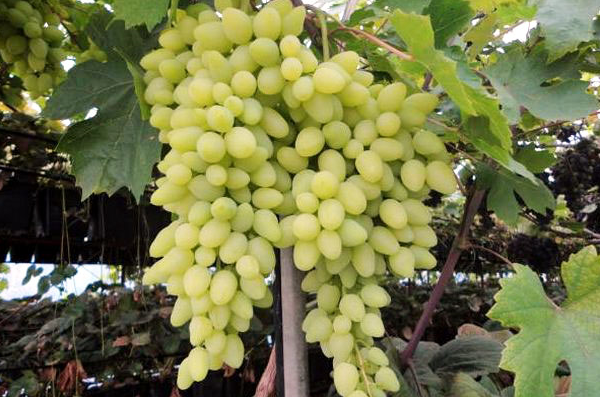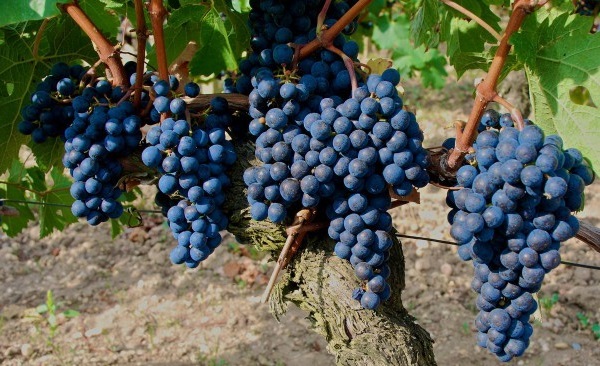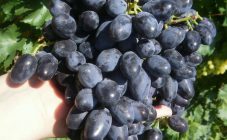An artificially bred table variety - Arcadia grape, obtained selectively from the dark blue grapes of Moldova and the purple Cardinal more than 20 years ago. The breeding was carried out at the V.E. Tairov Institute of Viticulture and Winemaking in Odessa. The hybrid variety is known as Nastya. It is considered the record holder for the sale of seedlings, it is one of the five leading varieties that are intended for trade. From Moldova, the variety inherited resistance to adverse weather conditions, from Cardinal - the quality of berries.
Description
To determine and choose grapes, the Arcadia variety, the description of the variety and its advantages must be studied in more detail:
- Bunches of grapes have a conical or cylindrical shape, reach large sizes (weight from 600 g to 2.5 kg). Often, bunches are wide, with a large swing and a loose structure, sometimes medium density is found.
- The fruits of the Arcadia variety are large in size: the berry is 3.7 cm high, 2.8 cm wide. It often has an original heart-shaped or standard ovoid shape. Each berry weighs 10-15 g. The skin is of a beautiful amber hue, thin and strong. On the surface of the skin is a thin layer of white pruin (wax). The pulp is juicy and fleshy. Sweet taste and nutmeg aroma.
- The vine grows to a large size. Growth strength is medium. Despite unfavorable weather conditions, the shoots of the bush ripen well. About 50-75% of the shoots are usually fruitful. Withstands temperatures up to -21-23 ° C.
- The flower of Arcadia is bisexual, pollinated independently. The vineyard with growing Nastya provides pollination of the Laura and Talisman varieties.
Specifications
An experienced winegrower has knowledge of the Arcadia hybrid variety. The main characteristics are highlighted:
- ripening occurs 110-115 days after the formation of ovaries;
- in September, an average crop is harvested from a bush - 20 kg;
- Arcadia is highly resistant to disease;
- grapes self-pollinate, acts as a pollinator for other varieties;
- berries have a sweet taste with a nutmeg undertone;
- acidity - 6 g / l;
- berries are perfectly preserved during transportation;
- grapes belong to the table variety.
Distinctive features
In addition to the base variety, breeders managed to breed a pink (Helios) and an early Arcadia variety.
The pink grape variety has:
- pink color of berries;
- rich and pronounced taste;
- smaller fruits and medium-sized bunches;
- the ripening period is long - about 130 days;
- high density, which does not allow them to burst.
The early variety is different:
- fast ripening - about 110 days;
- high density of the pulp;
- resistance to powdery mildew and wasp damage;
- relatively low frost resistance;
- soft fruits.
Landing
Before planting, the seedling must be placed in water for at least 1 day. If it is impossible to plant a plant immediately after buying a seedling, it is allowed to dig it into wet sand. Next, you need to dig a hole along the length of the seedling and apply organic fertilizers. Before planting, the root of the plant is shortened with a pruner, leaving 10-14 cm.
To get a good and high-quality harvest, you need to adhere to the basic rules of agricultural technology:
- you can plant the plant in the fall, but it is best to do it in the spring in April;
- berries of a more refined taste are obtained when growing own-rooted seedlings;
- grape bushes should be treated with Bordeaux liquid for prevention and in order to avoid mildew disease;
- katarovka is mandatory - removal of roots up to 20 cm from the surface;
- watering the grapes is recommended before flowering and after not along the grooves, under a bush from a bucket, the most economical way is drip irrigation;
- the use of non-vegetation irrigation is when irrigation is carried out in the fall in order to store moisture in the soil to prevent freezing;
- mulching is recommended;
- you need to feed the plant with mineral fertilizers;
- after flowering in June, grapes are minted;
- to prevent infection with a fungal disease, the Arcadia bush is sprayed with a special preparation Ridomil Gold when 3 leaves appear, after 14 days, repeat the procedure;
- an excess of nitrogen has a bad effect on the grapes, it is recommended to fertilize with potash and phosphate fertilizers;
- permissible load on a bush up to 45 eyes;
- when removed, the trim is left for 9-11 eyes;
- one bunch on each shoot is permissible.
Care
During and before flowering, grapes require proper watering. The abundance depends on the season: in dry times, the bush needs water to avoid stress during sudden changes in moisture in the soil.
In the middle of autumn and spring, mulching should be carried out. The soil around the bush is covered with humus by 3 cm. It is in the spring that the soil is fertilized with potassium-phosphorus mixtures, which contributes to the growth of the seedling in the autumn.
The bush is pruned when the vine is at rest. It is recommended to form a bush in the form of a fan, leaving several sleeves of grapes, which are cut within 12 eyes. So the branches are not overloaded with the harvest. To obtain juicy and large berries, one bunch is left on each shoot. A trellis is used to support the bush.
Nastya is not the most disease-resistant variety, so disease prevention is essential. The bush is sprayed 2 times a year during irrigation with fungicides and Bordeaux liquid with a concentration of up to 1%.
Advantages and disadvantages
The Arcadia grape has several advantages:
- is one of the earliest varieties;
- berries ripen at the same time;
- the crop is harvested 3 years after planting;
- Nastya has a light pleasant aroma;
- with proper care, the harvest from the bush reaches 26 kg;
- Arcadia adapts perfectly to climate change.
With a large number of advantages, the hybrid variety also has disadvantages:
- the photophilousness of the plant will become a problem with the slightest darkening;
- poorly tolerates drafts and cold wind;
- the bush can be overloaded, resulting in a smaller berry size.
Viticulture is aimed at growing high yields of table grape varieties in any region. About half a century ago, the industry spread to Siberia. It was not immediately possible to grow a southern crop due to significant changes in daily temperature, a short growing season, and a long and frosty winter. For this, a thorough preparation of the trench and soil with thick walls of boards is carried out. After planting, the bushes are tightly covered from above to endure frost. The shelter is removed only in April.
Summing up, we can say with confidence that Arcadia is ideal for fresh consumption or canning - grapes, the description and care features of which are presented above will help beginners start growing a delicious hybrid variety.
